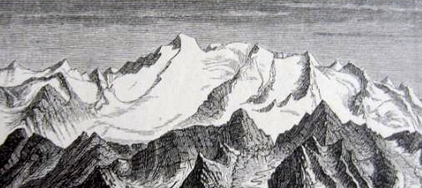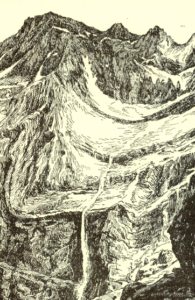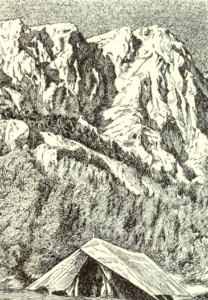

The Pyrenees from 1280 to 1850
The Pyrenees have their maximum height at the summit of the Aneto: 3,404 meters above sea level. This height is modest compared to other mountains on the planet. However, the Pyrenees have a great history that links man with the mountains. In this article we want to briefly show the extent of this story.
The Pyrenees were the first mountains that man faced. The legend says that Roldán, a knight of Carlo Magno in the Middle Ages, was persecuted in France so he fled. In Marboré, seeing that the mountains blocked the road, he used his sword Durandal to make a huge cut in the mountain, now called “Roldán Gap.”
Pedro III, King of Catalonia and Aragon, in the year 1,285, proposed to climb Canigó, considered the highest mountain in the Pyrenees. When he arrived at the summit, he imagined seeing a lake and a dragon, perhaps due to his exhaustion. At this time. There were numerous legends about the mountain, as well as religious stories that gave rise to hermitages, such as the circus of Estaubé and the Mary of Nuria.
The scientist Henry Reboul, in 1787, ascended the first summit more than 3,000 meters, the summit of the Touron de Neouvièlle (3,035m). In the year 1,789, he made the second ascent of a mountain more than three thousand meters, the mountain Quaïrat (3,060m).
Monte Perdido
In 1796 Ramond, sought a route to ascend Monte Perdido (Lost Mount), which was 3,355 meters. He went to the Touquerroye gap with nine companions, discovered the largest glacier in the Pyrenees, the north face of Monte Perdido, and the frozen lake of Marboré. The Lost Mount was reached in 1802 by the guides Laurent and Rondo hired by Ramond and accompanied by an Aragonese shepherd.
In the year 1817 Henry Reboul discovered a summit higher than Monte Perdido, hidden behind the Maladeta, which was 3,308 meters. Henry gave it the name of the town that was below “Aneto.” The following year, the German Frederic Parrot made the crossing of the Pyrenees from sea to sea.
In 1822, Petit Vignamale (3,032m) was climbed by Chaussenque and in 1823 he climbed Canigó Pica (2,784m). In 1824, Pierre Barrau wanted to climb the Maladeta without ropes, which resulted in the first Pyrenean accident. Pierre’s body wasn’t found until 107 years later at the tongue of the glacier.
Aneto
In 1842, the Russian Tchihatcheff ascended to Aneto (3,404m / 11,168 ft) passing through the Renclusa valley. He contoured the slope of Paderna to the headwaters of Vallibierna. On July 20th, from the gap Collado de Coronas, he ascended to what would later be called Muhammad Bridge, which according to the Mohammedans is the gate of heaven.
In 1848, the first female ascent of Aneto was made by Mss. Marshall.
In 1849, French scientists made several measurements in the Eastern Pyrenees, ascending to the main summits, including the Carlit (2,921m) and Puigmal (2,911m).
Category: Blog, History Tags: Barcelona-Walking, Pyrenees
Contact and Booking
Mobile: +34649970408 pere.sauret10@gmail.com
Experiences
Hiking Walking Rock-climbing
Donate
Copyright © 2025 · All Rights Reserved · BarcelonaWalking Barcelona Hiking Barcelona Montserrat Costa Brava Pyrenees
Adventure Theme by Organic Themes · WordPress Hosting · RSS Feed · Log in
 BarcelonaWalking Barcelona Hiking Barcelona Montserrat Costa Brava Pyrenees
BarcelonaWalking Barcelona Hiking Barcelona Montserrat Costa Brava Pyrenees
